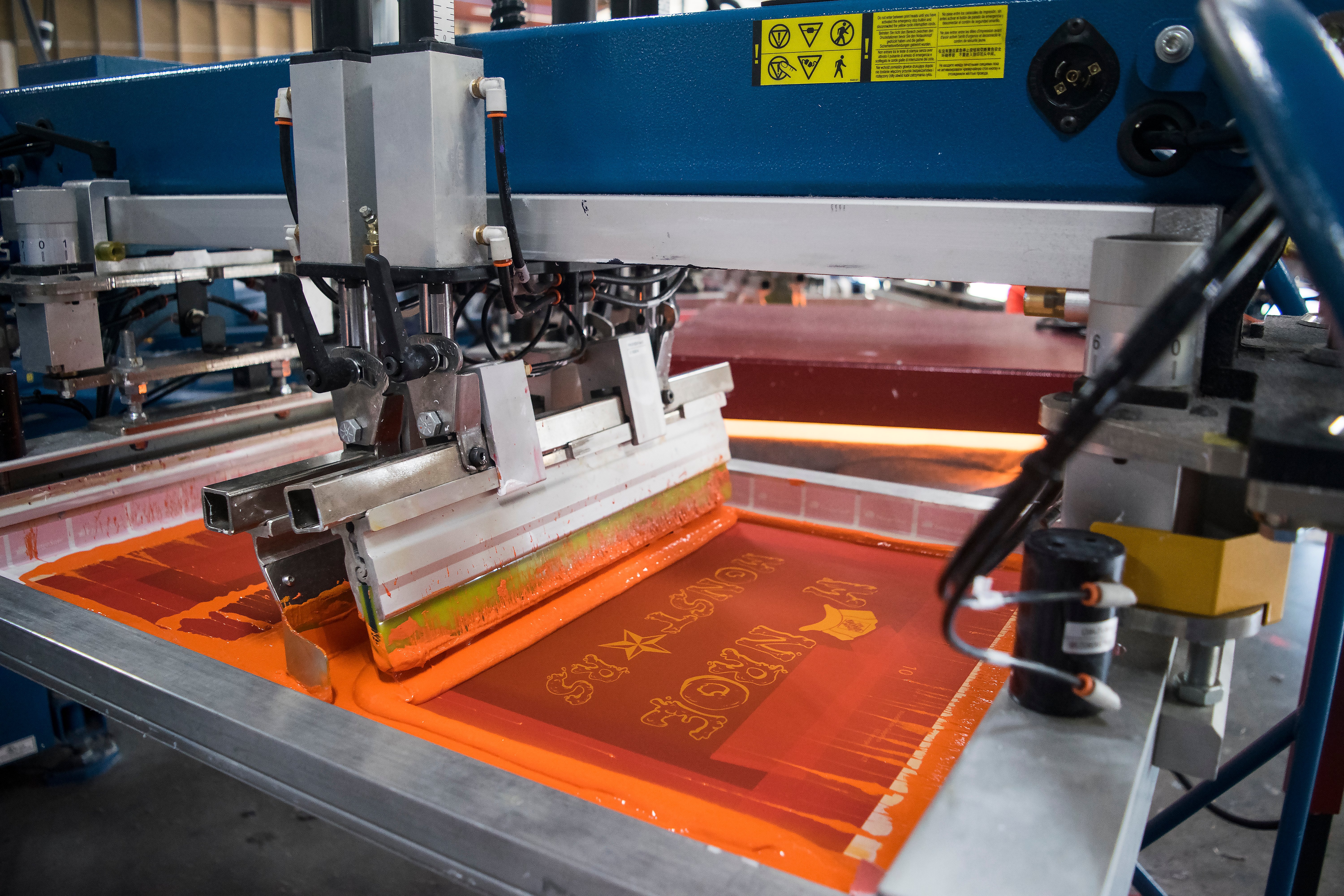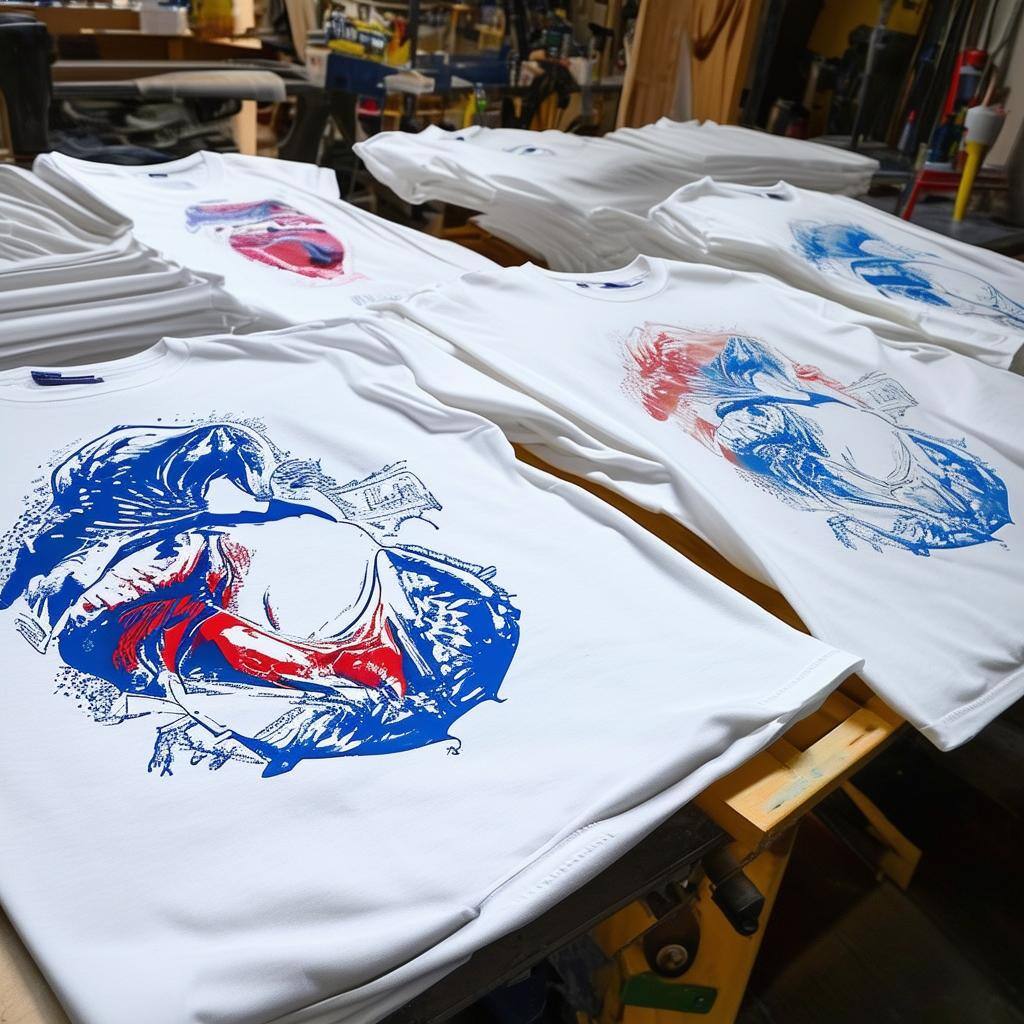
The Evolution of Screen Printing: A Journey Through Time

Screen printing, also known as silk screening, is a printing technique that has stood the test of time. From its ancient roots to modern applications, this art form has evolved remarkably, adapting to new technologies and expanding into industries far beyond traditional printmaking. Let’s journey through the history of screen printing and see how it has transformed over the centuries.
Ancient Beginnings
The earliest known form of screen printing can be traced back to China during the Song Dynasty (960–1279 AD). Chinese artisans used silk mesh and stencil-based techniques to transfer ink onto fabric. This method soon spread to other parts of Asia, particularly Japan, where it was refined further and incorporated into textile printing.
The Introduction to the West
Screen printing remained largely an Eastern practice until the 18th and 19th centuries when it reached Europe. Early European printers used rudimentary stencils and silk screens to decorate wallpaper and fabric, but the technique was still quite limited due to the lack of durable, high-quality materials.
The Industrial Revolution and Beyond
The Industrial Revolution in the 19th century brought significant advancements in manufacturing and printing. With the introduction of synthetic materials, screen printing became more efficient and durable. In 1907, Samuel Simon, a British printer, patented a fabric screen printing method, laying the groundwork for modern screen printing techniques.
The Rise of Commercial Screen Printing
In the 1930s and 1940s, screen printing gained popularity in commercial advertising, particularly in the United States. The introduction of photo-reactive chemicals allowed for more detailed and intricate designs, making it easier to produce posters, advertisements, and fine art prints. One of the most famous adopters of screen printing in the art world was Andy Warhol, who popularized the technique in the 1960s with his iconic pop art pieces, such as the Marilyn Monroe series and the Campbell’s Soup Cans.
Screen Printing in the Modern Era
Today, screen printing is widely used across various industries, from fashion and textiles to electronics and industrial manufacturing. Modern screen printing has embraced digital technologies for greater precision, efficiency, and automation. Plastisol inks, water-based inks, and eco-friendly alternatives have also evolved to meet the needs of environmentally conscious businesses and consumers.
In the apparel industry, screen printing remains one of the most popular methods for customizing t-shirts, hoodies, and other garments due to its durability and vibrant color applications. Additionally, screen printing is used in specialty applications such as circuit board production, solar panel manufacturing, and even biomedical printing.
Leading the Way in Modern Quality Production: JW Contract Screen
At JW Contract Screen, the commitment to high-quality production is rooted in the deep traditions of screen printing while embracing modern innovation. By leveraging advanced techniques, top-tier inks, and cutting-edge equipment, JW Contract Screen ensures every print meets the highest standards of durability and vibrancy.
Recognizing the importance of screen printing as an art form and a technical craft, JW Contract Screen honors its history while pushing the boundaries of what’s possible. Whether working on custom apparel, promotional products, or unique designs, the company remains dedicated to precision, efficiency, and sustainability. By combining traditional craftsmanship with modern printing methods, JW Contract Screen is not just keeping the art alive but leading the way in shaping the future of screen printing.
The Future of Screen Printing: Embracing DTF Technology
While digital printing technologies, such as direct-to-garment (DTG) printing, continue to gain traction, screen printing remains a preferred choice for large-scale production due to its cost-effectiveness and versatility. One of the most exciting advancements in the industry is Direct-to-Film (DTF) printing. This method allows high-quality, full-color prints to be transferred directly onto garments with exceptional durability and detail.
JW Contract Screen has adopted DTF printing as a complement to traditional screen printing, helping to control costs while maintaining exceptional quality. This technology enables the company to offer more flexible printing options, including intricate designs, vibrant colors, and smaller production runs without sacrificing efficiency.
One of the most significant advantages of DTF printing is its ability to add personalization to larger orders. This allows JW Contract Screen to customize garments with individual names, job titles, or designations such as “Staff” without requiring expensive and time-consuming setup changes. Whether a business needs branded apparel with unique employee names or a school event requiring personalized team shirts, DTF makes handling small batch variations within a larger print run easy and cost-effective.
By integrating DTF into its production process, JW Contract Screen ensures customers receive the best of both worlds—time-honored screen printing craftsmanship alongside cutting-edge digital solutions that enhance efficiency, affordability, and customization.
Conclusion
From its humble beginnings in ancient China to its place in modern manufacturing and art, screen printing has come a long way. Its adaptability and ability to produce high-quality prints make it a timeless and essential printing technique. As technology advances, screen printing will continue to evolve, solidifying its role in industries worldwide.
Whether you’re an artist, entrepreneur, or part of the apparel industry, screen printing remains a powerful and enduring medium. Its rich history and continuous innovation prove that even centuries-old techniques can stand the test of time.


